The assassination of US President John F. Kennedy remains one of the most intensely examined events in American political history. Following fatal gunshot wounds to the head and neck, his body was transported from Dallas, Texas, to Washington, DC, in a bronze casket. Yet, what many people may not know is that this was not the casket in which he was ultimately laid to rest.
John F. Kennedy’s assassination
On November 22, 1963, John F. Kennedy, Texas Governor John Connally, and their wives were traveling through downtown Dallas in a motorcade. At 12:30 PM, gunfire erupted from the Texas School Book Depository, targeting the convoy. The shooter was identified as Lee Harvey Oswald, a recent employee at the depository and a US Marine Corps veteran.
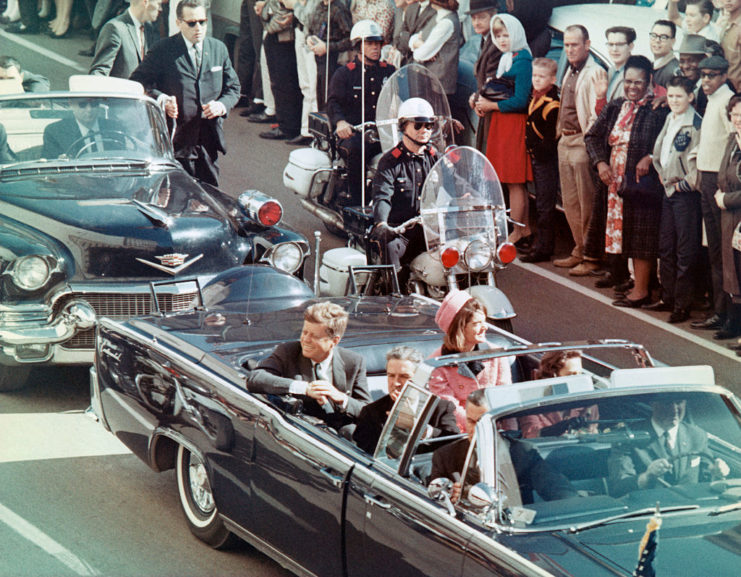
Kennedy was struck in the head and neck, while Connally sustained a gunshot wound to the back. Kennedy was rushed to Parkland Memorial Hospital, where he was declared dead at 1:00 PM. Despite his severe injuries, Connally eventually recovered.
Shortly before 2:40 PM, Vice President Lyndon B. Johnson, who had been two cars behind the Kennedys in the motorcade, was sworn in as the 36th President of the United States aboard Air Force One.
The need for two coffins
Immediately following Kennedy’s assassination, a member of his staff contacted O’Neal’s Funeral Home in Dallas to request the finest casket available for delivery to the hospital. Vernon O’Neal, the owner, selected a bronze coffin with a white satin interior from the Elgin Casket Company, priced at $3,995—equivalent to over $36,000 today.
After loading the casket into a hearse, O’Neal arrived at the hospital, horrified by the condition of Kennedy’s body, with blood still oozing from his wounds. To preserve the casket’s interior, he and several nurses wrapped the body in linen sheets and lined the coffin with plastic.
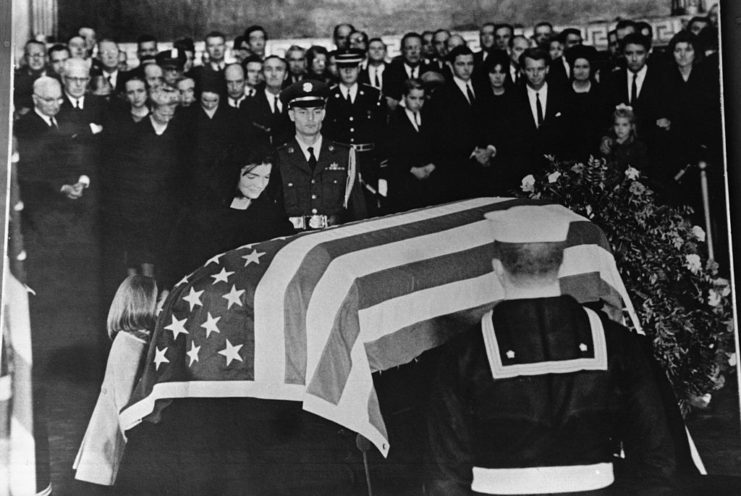
At Jacqueline “Jackie” Kennedy‘s request, the autopsy was conducted at Bethesda Naval Hospital near Washington, DC. Her husband’s body was flown back to the capital in the passenger section of Air Force One. However, when the casket was opened at the hospital, O’Neal’s efforts to protect its interior proved inadequate.
Following the embalming, the original casket was found unsuitable for Kennedy’s viewing at the Capitol Building and needed to be replaced. Unsure of what to do with it, the funeral home that handled the embalming kept the original casket for more than a year.
Preventing it from falling into the hands of the “morbidly curious”
After Kennedy’s burial, a dispute arose between the US government and Vernon O’Neal over the cost of the original coffin. The government deemed the price too high, while O’Neal insisted it be sent back to Dallas, as he had received offers of $100,000—equivalent to nearly $1 million today—from potential buyers.
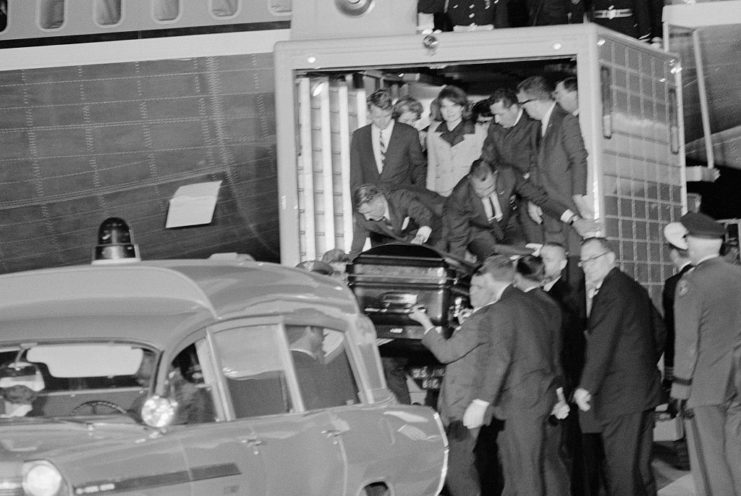
Not wanting the casket falling into the hands of the “morbidly curious,” the government settled the payment with O’Neal and stored the coffin at the National Archives, where it stayed for two years.
Burying the casket at sea
In 1999, documents were released regarding the casket’s fate following its stay in the National Archives. Robert Kennedy, the United States Attorney General at the time, had approached the government about having it buried at sea, to ensure it never fell into the hands of those who would exploit his brother’s death. Once approved the job of disposing of it was given to the US military.
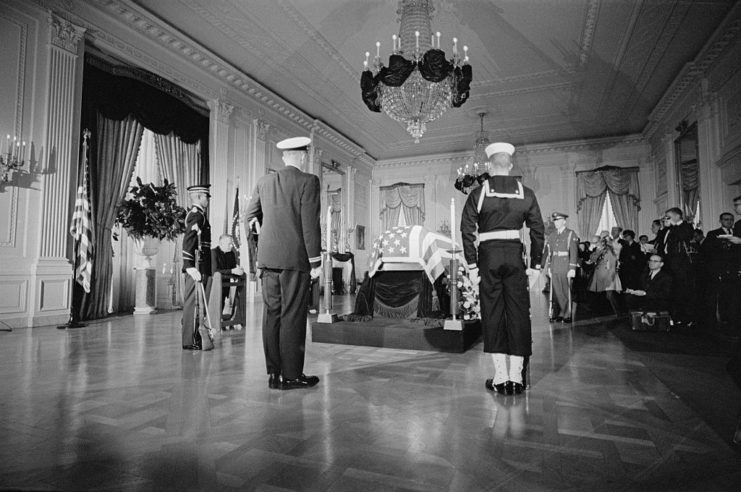
A submarine commander was tasked with figuring out how to securely drop and sink the casket. It was turned over to the US Air Force, and had 42 holes drilled into it and three 80-pound sandbags placed within. It was also fitted with two parachutes, to ensure it wouldn’t break apart upon impact with the water.
On a brisk February morning in 1966, a C-130 Hercules transport plane took off from its base and flew out into the Atlantic Ocean, approximately 100 miles east of Washington, DC. The area, used as the military’s dumping ground for unused and outdated ammunition and weapons, was chosen because it was out of the way of regular shipping and air travel and would “not be disturbed by trawling and other sea-bottom activities.”
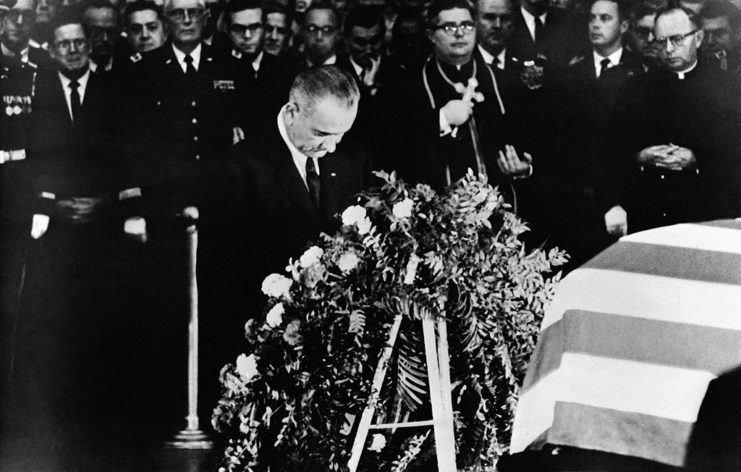
After descending to 500 feet, the tail hatch of the plane was opened and the casket was dropped into the water. According to a February 25, 1966 memo from the special assistant to the defense secretary, “the parachutes opened shortly before impact and the entire rigged load remained intact and sank sharply, clearly and immediately after a soft impact.” After circling the area for 10 minutes, the C-130 flew back to the mainland.
Are you a fan of all things ships and submarines? If so, subscribe to our Daily Warships newsletter!
The casket’s fate was rather fitting, as Kennedy, a Navy veteran, had once considered a burial at sea.
